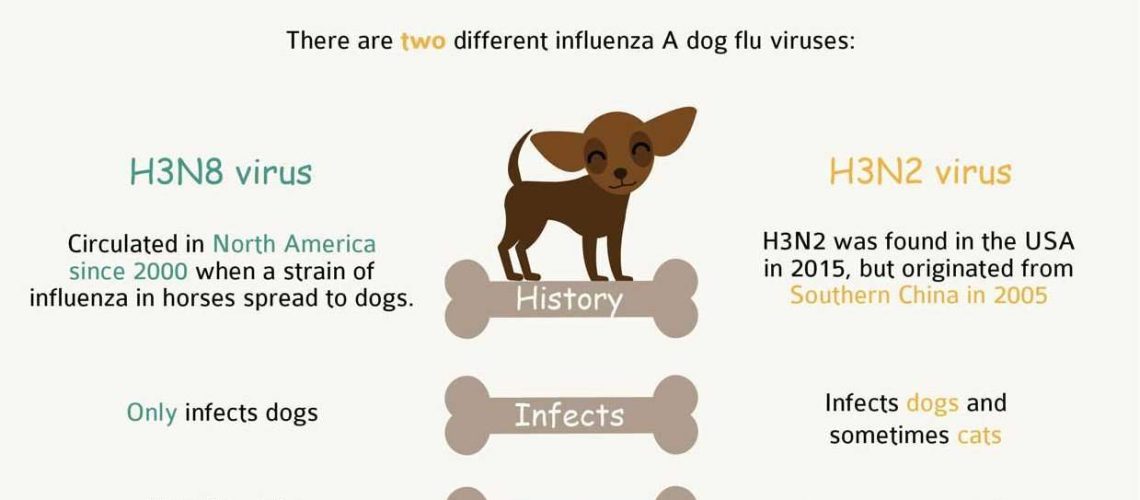Key Takeaways:
- Canine influenza is a highly contagious respiratory disease that affects dogs.
- The two strains of canine influenza virus, H3N8 and H3N2, can cause similar symptoms including coughing, sneezing, and fever.
- Vaccination is available to protect dogs against canine influenza, especially those at high risk such as those in boarding facilities or dog shows.
- Isolation and good hygiene practices are crucial to prevent the spread of canine influenza among dogs.
- If your dog shows symptoms of canine influenza, it is important to seek veterinary care to manage the illness and prevent complications.
Are you a dog lover? If so, then understanding the topic of Canine Influenza in Dogs is crucial for your furry friend's well-being. Imagine being able to protect your beloved pet from a potentially dangerous virus that could cause them harm.
By delving into this subject, you will gain valuable knowledge on how to keep your canine companion safe and healthy. Did you know that Canine Influenza has affected thousands of dogs across the country? With the right information, you can take proactive measures to prevent the spread of this contagious disease. So, let's embark on this journey together and ensure the happiness and longevity of our four-legged friends!
What is Canine Influenza in Dogs and how does it affect them?
Understanding Canine Influenza
Canine influenza, also known as dog flu, is a contagious respiratory disease that affects dogs. It is caused by two different strains of the influenza virus: H3N8 and H3N2. These viruses can cause mild to severe illness in dogs, similar to how humans can get the flu.
The virus spreads easily from one dog to another through respiratory secretions. This means that when an infected dog coughs, sneezes, or barks, tiny droplets containing the virus can be released into the air. Other dogs can then inhale these droplets and become infected.
How Canine Influenza Affects Dogs
When a dog gets infected with canine influenza, they may experience symptoms such as coughing, sneezing, nasal discharge, fever, lethargy (lack of energy), and loss of appetite. Some dogs may have a more severe form of the disease and develop pneumonia, which can be life-threatening if not treated promptly.
It's important to note that not all dogs will show symptoms even if they are infected with the virus. However, these asymptomatic dogs can still spread the virus to other dogs. That's why it's crucial to take preventive measures to protect your furry friend from getting sick.
How Canine Influenza spreads from one dog to another
The Spread of Canine Influenza
The primary way canine influenza spreads is through direct contact between dogs or through contact with contaminated objects such as toys or food bowls. When an infected dog comes into close proximity with a healthy dog, there is a high risk of transmission.
The virus can also be spread indirectly through humans. If a person touches an infected dog and then touches a healthy dog without washing their hands, they can unknowingly transmit the virus. It's essential to practice good hygiene when handling dogs, especially if there is an outbreak of canine influenza in your area.
Preventing the Spread of Canine Influenza
To prevent the spread of canine influenza, it's important to take certain precautions:
- Keep sick dogs away from other dogs until they have fully recovered.
- Clean and disinfect toys, bowls, and other items that may come into contact with infected dogs.
- Wash your hands thoroughly after handling any dogs, especially if they are showing symptoms of illness.
- Avoid taking your dog to places where there may be a high concentration of dogs, such as dog parks or boarding facilities, during an outbreak.
Common symptoms of Canine Influenza in dogs
Recognizing Symptoms
Dogs with canine influenza may exhibit several common symptoms:
- Coughing: Dogs may have a persistent cough that can last for several weeks.
- Sneezing: Just like humans, dogs with canine influenza may sneeze frequently.
- Nasal discharge: Infected dogs may have a runny nose or discharge from their nostrils.
- Fever: A high body temperature is often present in dogs with canine influenza.
- Lethargy: Dogs infected with the virus may appear tired and lack energy.
- Loss of appetite: A decreased interest in food is a common symptom of canine influenza.
If you notice any of these symptoms in your dog, it's important to consult a veterinarian for proper diagnosis and treatment.
Which dog breeds and age groups are more prone to Canine Influenza?
Breeds and Age Groups at Risk
All dogs, regardless of breed or age, can be susceptible to canine influenza. However, certain factors may increase the risk:
- Puppies: Young dogs with developing immune systems are more vulnerable to infections like canine influenza.
- Elderly dogs: Older dogs may have weaker immune systems, making them more prone to getting sick.
- Dogs in crowded environments: Dogs that live in shelters, boarding facilities, or attend dog shows are at a higher risk due to close proximity with other dogs.
- Brachycephalic breeds: Breeds with short noses and flat faces, such as Bulldogs and Pugs, may be more susceptible to respiratory infections like canine influenza.
While these factors may increase the risk, it's important to remember that any dog can potentially contract canine influenza. Taking preventive measures is crucial for all dogs' well-being.
Tips for preventing Canine Influenza in dogs
Preventive Measures
To minimize the risk of your dog contracting canine influenza:
- Vaccinate your dog: Talk to your veterinarian about the canine influenza vaccine. Vaccination can help protect your dog from getting sick or reduce the severity of symptoms if they do get infected.
- Avoid contact with sick dogs: If you know there is an outbreak of canine influenza in your area, keep your dog away from other dogs that may be sick.
- Practice good hygiene: Wash your hands after handling dogs, especially if they are showing signs of illness. This will help prevent the spread of the virus to other dogs or humans.
- Keep a clean environment: Regularly clean and disinfect your dog's belongings, such as toys, bedding, and food bowls, to minimize the risk of contamination.
By following these preventive measures, you can significantly reduce the chances of your dog contracting canine influenza and ensure their overall health and well-being.
Is there a vaccine for Canine Influenza, and how effective is it?
The Canine Influenza Vaccine
Yes, there is a vaccine available for canine influenza. The vaccine helps stimulate the dog's immune system to produce antibodies against the virus. These antibodies can then protect the dog from getting sick or reduce the severity of symptoms if they do become infected.
The effectiveness of the vaccine can vary depending on factors such as the specific strain of canine influenza virus and individual dog's immune response. However, studies have shown that vaccination can significantly reduce the risk of infection and lessen the severity of symptoms in vaccinated dogs.
It's important to consult with a veterinarian to determine if your dog should receive the vaccine based on their lifestyle, risk factors, and local prevalence of canine influenza. Vaccination is often recommended for dogs at higher risk or those living in areas with known outbreaks.
In conclusion, canine influenza is a contagious respiratory disease that affects dogs. It can spread easily and cause symptoms like coughing, sneezing, and fever. It is important for dog owners to be aware of this illness and take preventive measures to keep their pets safe and healthy.
What are the signs and symptoms of canine influenza?
Signs of Canine Influenza Virus (CIV) include two types of strains, namely H3N8 and H3N2, and the symptoms are similar to those of "kennel cough." Look out for coughing, discharge from the nose and eyes, sneezing, and a fever between 104-105 degrees Fahrenheit.
Is canine influenza highly contagious to other dogs?
Canine influenza is a highly contagious disease that can easily spread among dogs in close proximity, such as in dog parks, daycare centers, grooming facilities, boarding facilities, animal shelters, and veterinary hospitals. This disease can quickly spread and infect many dogs.
Can you treat canine influenza at home?
Canine influenza is a communicable disease caused by a viral infection. While milder cases can be managed at home, more severe cases will require veterinary attention.
Is canine influenza the same as Bordetella?
Canine Influenza, also known as "Dog Flu," is not the same as Bordetella. However, both Canine Influenza and Bordetella are respiratory infections. There are two strains of the Dog Flu: H3N2 and H2N8.
How do vets test for canine influenza?
The diagnosis of canine influenza virus can be made by performing PCR on deep nasal and/or pharyngeal swabs. It is important to collect these samples within 1-2 days of when the clinical signs first appear. The PCR test is not very useful for dogs that have been sick for several days because viral shedding is highest early on in the illness.
How often do dogs get canine influenza?
The canine influenza virus does not affect a large portion of the dog population, and many dogs have never been exposed to it. About 80% of dogs that are exposed to the virus may develop the disease. However, the mortality rate is relatively low, at less than 10%. Deaths mostly occur in dogs that have the severe form of the illness.

















